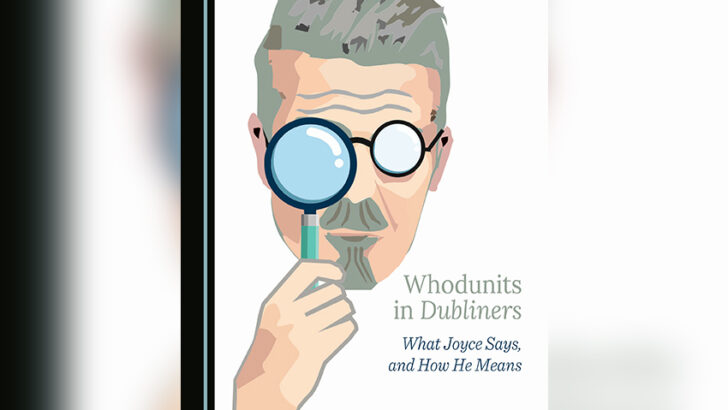Whodunits in Dubliners: What Joyce Says, And How He Means, by Peter van de Kamp (Cambridge Scholars, €92.99/£81.99; ISBN: 9781527581487.)
For a generation Dr van de Kamp has led the annual Dubliners seminar at the James Joyce International Summer School in University College Dublin, a gathering that is a major event in the Joycean calendar.
This has given him a unique position to expound, debate and discuss his insights with his students, and to benefit in turn from their observations on a book that is a key among Joyce’s works, but all too often one neglected by those who set out to read Joyce. All too many people make a start with Joyce’s ‘masterpiece’ Ulysses, but overlook its essential predecessor, Joyce’s volume of short stories.
These were described by one critic at the time, that is to say more than a century ago, as follows: “They are all of them brave, relentless, and sympathetic pictures of Dublin life: realistic, perhaps but not crude, analytic but not crude.” Joyce’s “practice of the short story is certainly unique and certainly vital”. He was seen as an outstanding figure of the developing art of the Irish short story.
The aim of this book is to conduct 15 autopsies, one on each story, with the advantage often denied a mere forensic pathologist, of changing his mind and exploring new dimensions in the texts on a continual basis.
His book, moreover, works on aspects of each story, not in sequence, but as a whole. We can take chapter seven, on “A Painful Case”. What strikes me at once about this story as a whole is its setting in Chapelizod. The interpretation of the story focuses on the death of Mrs Sinico. But one asks “Why Chapelizod”?
This place had personal associations for Joyce for it was here that his unmarried father had lived when he was running the local distillery: Joyce had grown up with his father’s stories about the village. And also about the Mullingar Hotel where he may have resided, and where (much later) Finnegans Wake would be set. The place connects Joyce’s own beginnings with the climax of his literary life.
And, of course, it was famously associated with the legend of Isolde and Tristan, which is, as much as Joyce’s story is, a tale of adultery ending in death. These two aspects are not discussed; but it seems to me they would make a fruitful source of reflection.
However, this is the fate of a critic who sets out to dissect a story: there is always more to be discovered; more, much more to be understood in context.
One aspect of Joyce’s approach to setting stories in his native city which most readers are unaware of, but what was important to Joyce in writing his stories, are the local social and topographical details. Take for instance the discussion of street lighting in the essay on “Two gallants”, this is quite fascinating. The public lights in Joyce are electric, new, and literally more illuminating than the old gaslights.
But it is important to say that this book is aimed at an experienced Joycean readership; it will provide little joy to readers very new to Joyce. But for those moving deeper into the mysterious realm of James Joyce they will fascinate.
Down to the late 1960s it was still possible to see large parts of Joyce’s Dublin still in place. Now a century later than the book’s creation all that is more or less gone. Joyce’s Dublin is as much a shadowy ghost as is the London of Dickens. Peter van de Kamp goes a long way to a guide to long overlooked, but meaningful aspects of Joyce’s city.


 Peter Costello
Peter Costello
